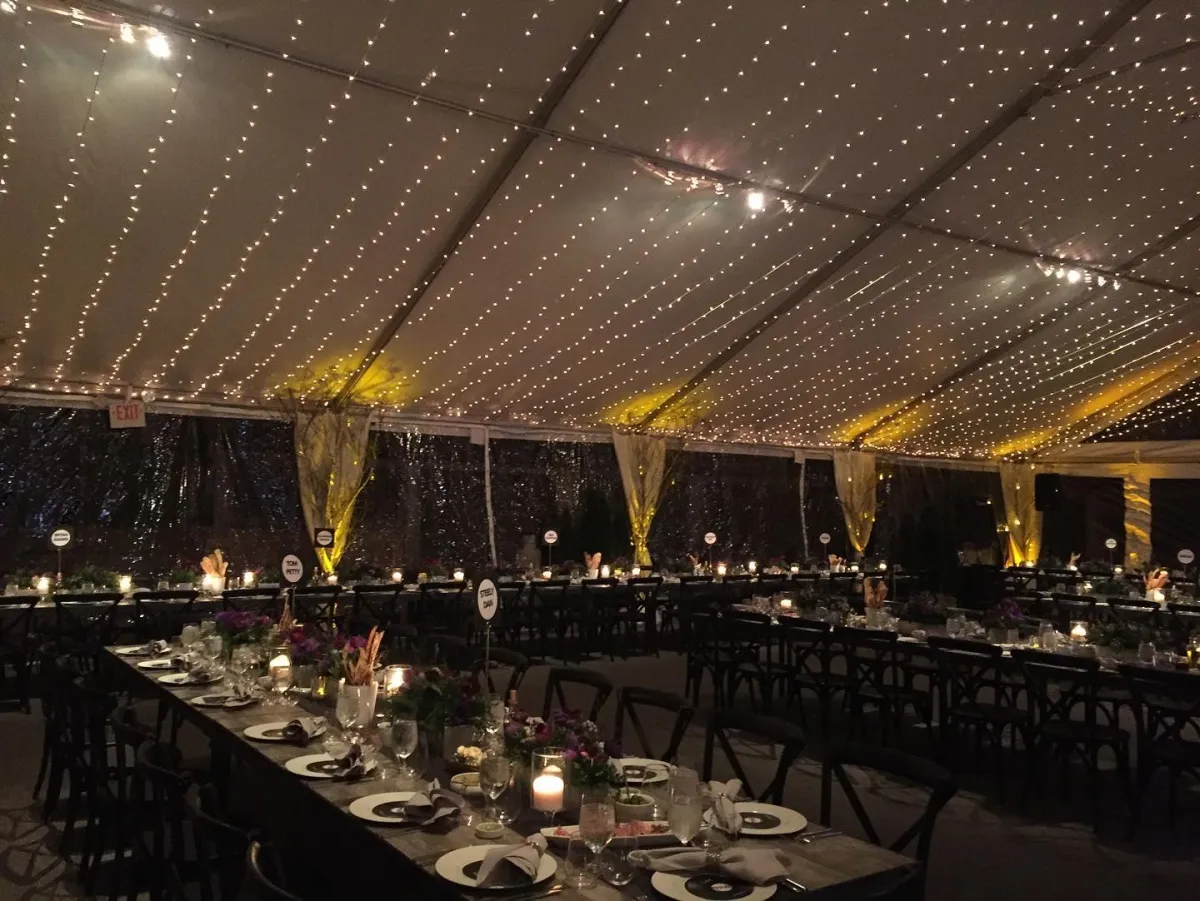
How to Design a Rain-Ready Outdoor Reception in Nassau County
There’s nothing more picturesque than an outdoor reception — the fresh air, the natural backdrop, and the open sky. But in Nassau County, unpredictable weather can quickly turn a dream celebration into a logistical nightmare. Whether you’re hosting a wedding, corporate gathering, or milestone party, preparing for rain is not just a nice-to-have — it’s essential.
This blog will walk you through everything you need to know to design a reception that stays beautiful and functional, no matter what the forecast says.
Why Rain-Ready Planning Matters
Rain can disrupt more than just your schedule. It can affect the comfort of your guests, the safety of your equipment, and even the condition of your venue’s grounds. Nassau County is known for its coastal climate and occasional sudden showers, which means hosts and planners must be prepared for:
Wet and slippery ground that could create hazards
Ruined décor or damaged electronics if left exposed
Delays in catering or entertainment setup
Guest discomfort from damp seating or lack of cover
Rain-ready planning protects your investment, ensures a seamless experience, and keeps everyone comfortable regardless of the weather.
How to Design a Rain-Ready Outdoor Reception
Planning for rain doesn’t have to be stressful — it just takes foresight and the right equipment. Here’s a step-by-step approach to ensure your reception is weatherproof:
Step 1: Start with the Right Tent
Choose a tent style that provides full coverage and can be customized with walls or liners. Frame tents, structure tents, and clear-top options are excellent for receptions since they allow flexibility in layout and décor while offering strong rain protection.
Step 2: Add Weather-Resistant Accessories
Once you have your tent, enhance it with features that keep guests comfortable even in wet conditions. Consider:
Sidewalls with windows to keep rain out but let in natural light
Weighted flooring or staging to keep surfaces dry and level
Tent liners to prevent drips from condensation
Step 3: Ensure Proper Drainage and Layout
Work with your vendor to position the tent in a location with good drainage and slightly elevated ground if possible. Proper rain gutters and water management around the tent will prevent pooling and muddy walkways.
Step 4: Plan for Guest Comfort
Rain can make events feel chilly. Consider adding:
Heaters for cooler evenings
Umbrella stands at the entrance
Covered walkways between the tent and parking areas
Step 5: Protect Décor, Food, and Entertainment
Electronics like speakers, lighting rigs, and DJ equipment need proper cover or waterproof casings. Ask your rental provider for weatherproof electrical options. Caterers should have a protected prep area and serving space under cover.
Step 6: Have a Backup Communication Plan
Let guests know you’re prepared for weather changes and share updates if necessary. Clear signage and staff to direct guests can make a huge difference in maintaining a smooth flow when the rain starts.
FAQs
Do I Really Need a Tent If There’s a Chance of Rain?
Yes. Even a small chance of rain can cause major issues. A tent provides peace of mind and allows the event to continue without interruption.
What Tent Style Works Best for Rain?
Frame tents and structure tents are ideal because they are sturdy and allow for add-ons like sidewalls and gutters. Clear-top tents are great if you want natural light but should be paired with flooring to keep guests dry.
Can Flooring Prevent Mud?
Absolutely. Flooring systems create a stable, elevated surface that keeps guests off wet ground and prevents chairs or tables from sinking.
What If the Forecast Changes Last Minute?
Work with a rental company that can install tents quickly if the weather shifts close to your event date. Many companies offer last-minute solutions if you’ve pre-arranged a rain plan.
Will a Rain Plan Affect the Look of My Event?
Not if done thoughtfully. Modern tents and accessories are elegant and customizable, so you can maintain your aesthetic while staying dry and comfortable.
Local Considerations for Nassau County
Nassau County venues range from waterfront estates to country clubs, each with its own challenges when it comes to rain. Coastal winds, salt air, and low-lying grounds require equipment that is sturdy and professionally installed. Choosing a local provider familiar with these conditions ensures that your setup is secure, safe, and compliant with county regulations.
Conclusion
Designing a rain-ready outdoor reception is all about preparation. By choosing the right tent, accessories, and layout, you can keep guests dry, décor protected, and your event timeline on track — even if the weather doesn’t cooperate.
If you’re planning an event in Nassau County, ask your rental partner about rain plans, drainage solutions, and last-minute setup options. The right preparation will let you focus on the celebration, not the forecast.